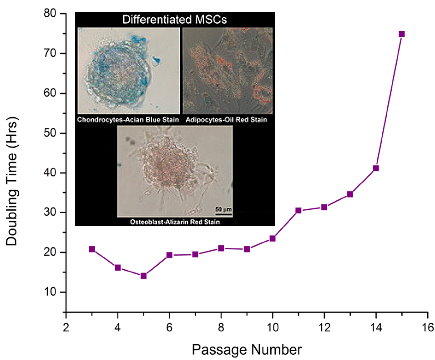Implications for treating Stress Related Depression.
Stress related disorders like Post Traumatic Stress Syndrome (PTSD), Major Depressive Disorder (MDD) and Generalized Anxiety Disorders (GAD) dysregulate neurogenesis. This disregulation can lead to disorders like chronic depression. Indeed, stress hurts.
In this study (which includes use of our Neural Progenitor Marker-
Nestin), researchers show for the first time that the alpha2delta (α2δ) ligands gabapentin [1- (aminomethyl)cyclohexaneacetic acid; GBP] and pregabalin [S-[+]-3-isobutylGABA or (S)-3- (aminomethyl)-5-methylhexanoic acid; PGB] can produce a concentration-dependent increase in the number of newborn mature and immature neurons generated in vitro from adult hippocampal neural progenitor cells (NPC), and, in parallel, a decrease in the number of undifferentiated precursor cells. These effects were confirmed in vivo, since a significantly increased number of adult generated neurons was observed in the hippocampal region of mice chronically treated with PGB [10 mg/kg, i.p., 21 days] compared to vehicle-treated mice. Moreover, we demonstrated that PGB administration prevented the appearance of depression-like behaviours induced by chronic restraint stress and, in parallel, promoted hippocampal neurogenesis in adult stressed mice. Finally, we provided data suggesting the potential involvement of the α2δ1 subunit and NF-κB signaling pathway in the drug-mediated proneurogenic effects. The new pharmacological activities of α2δ ligands may help explaining their therapeutic activity as add-on therapy in major depression and on depressive symptoms in posttraumatic stress disorder and generalized anxiety disorders. Furthermore these data contribute to the identification of novel molecular pathways which may represent potential targets for pharmacological modulation in depression:
Maria Maddalena Valente, Valeria Bortolotto, Bruna Cuccurazzu, Federica Ubezio, Vasco Meneghini, Maria Teresa Francese, Pier Luigi Canonico, Mariagrazia Grilli.Alpha2delta ligands act as positive modulators of adult hippocampal neurogenesis andprevent depressive-like behavior induced by chronic restraint stress. Molecular Pharmacology Fast Forward Published on May 9, 2012 as doi:10.1124/mol.112.077636.

Images: Effect of α2δ ligands on neuronal differentiation and proliferation of hippocampus-derived neural progenitor cells. (A) Representative fluorescence microscopy image of a hippocampal neurosphere immunolabelled for nestin (green) and SRY-related HMG-box gene 2 (Sox-2) (red), markers of undifferentiated NPC. Magnification = X600. Scale bar = 56 μm. (B) After 24 h in absence of growth factors, hippocampal Neural Progenitor Cells (NPC) differentiated giving rise to four different cell populations identified by double Microtubule Associated Protein-2 (MAP-2) and nestin immunolabelling: MAP-2+/nestin- mature neurons, MAP-2+/nestin+, MAP-2-/nestin+ and MAP-2-/nestin- cells. Data are expressed as mean ± S.D. of n=9 experiments, run in triplicates. Gabapentin (GBP) and pregabalin (PGB) promote neuronal differentiation of adult hippocampal NPC. GBP (C-F) and PGB (G-J) significantly increased, in a concentrationdependent manner, the percentage of MAP-2+/nestin- (C, G) and MAP-2+/nestin+ (D, H) cells and decreased the percentage of MAP-2-/nestin- cells (F, J), with no effect on MAP-2-/nestin+ cells (E, I). Data are expressed as mean ± S.D. of n = 3 experiments, run in triplicates. *, p < 0.05; **, p < 0.01; ***, p < 0.001 vs vehicle (Student’s t-test). (K-M) Representative fluorescence microscopy images of MAP-2 immunolabelling (green) in cells derived from hippocampal NPC after 24 h treatment with vehicle (K), 1 nM GBP (L) and 1 nM PGB (M). Nuclei are stained with Draq5(blue). Magnification = X400. Scale bar = 75 μm. (N) Adult hippocampal NPC were treated with vehicle or 1 nM PGB for 6, 24, 48, 72, 96 h and proliferation rate was assessed. PGB had no effect on NPC proliferation, when compared to vehicle. Data, expressed as counts per second (CPS), represent the mean ± S.D. of experiments run in triplicates.
This study is good news. Results demonstrate the new pharmacological activity of α2δ ligands may
potentially explain their efficacy as add-on therapy in MDD, as well as on depressive symptoms
in PTSD and GAD. This knowledge will help the discovery of refined therapies for these debilating disorders.

































